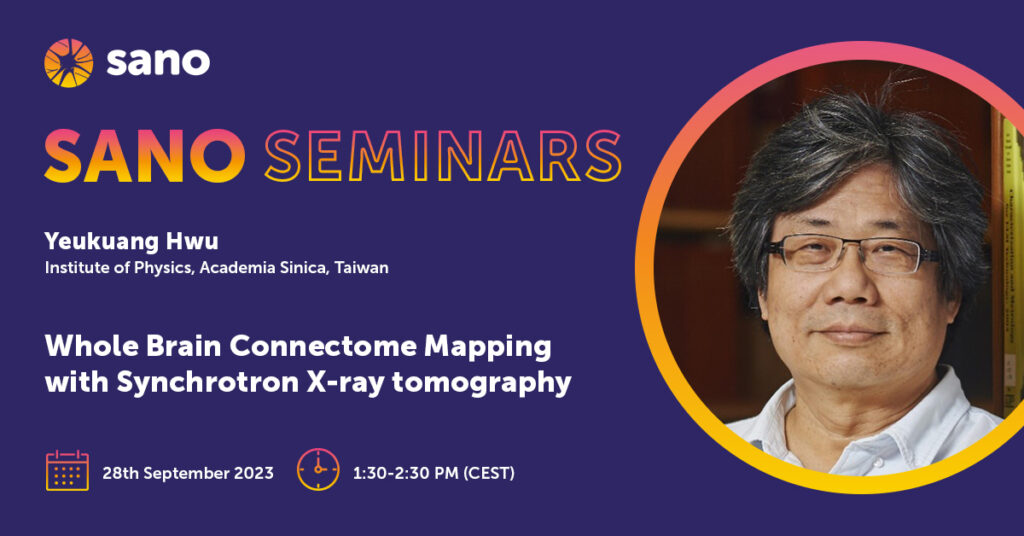105. Whole Brain Connectome Mapping with Synchrotron X-ray tomography
Yeukuang Hwu – Institute of Physics, Academia Sinica, Taiwan
Abstract
The complexity the complete neural networks in an animal brain is beyond the current technology to describe and analyze. Mapping the entire neural network in a brain down to the connections of all the functional building blocks, the neurons, was considered an impossible task. Armed by the improvements of synchrotron x-ray imaging, we argue otherwise: Could x-ray techniques be the tool of choice to challenge the animal brain circuitry mapping? Or more technically, is the overall performance adequate?
We designed an effective strategy based on recent advances of x-ray tomography in resolution and imaging speed, the approach reaches three critical objectives: (1) three-dimensional (3D) imaging with high and isotropic spatial resolution; (2) fast image taking and processing, as required for comprehensive whole-brain mapping within a reasonable time, and (3) multi-scale resolution, to zoom into specific regions of interest. The current performance is orders-of-magnitude faster than any other 3D imaging techniques based on visible light microscopy while with sub-cellular resolution far superior than the medical imaging techniques. This strategy is extensively tested in the last few years by mapping large populations of metal-labeled neurons and their connections in two animal models, Drosophila and mouse.
These positive results instigated two additional directions for further improved. First, an even better spatial resolution and higher probe depth, both are relevant to the high brightness synchrotron radiation and the new nanofabrication facilities, can drastically enrich the content of the resulting database. Second, an ongoing project also aims to improve the heavy metal staining efficiency and specificity can improve the throughput of the whole brain imaging and achieving specific labeling simultaneously. The newly initiated SYNAPSE (Synchrotron for Neuroscience – an Asia Pacific Strategic Enterprise) consortium with 8 synchrotron and 4 supercomputing facilities, provide the necessary data acquisition and processing power and guarantee that a human brain can be mapped within 4 years.
About the author
Professor Yeukuang Hwu is a Distinguished Research Fellow at the Institute of Physics, Academia Sinica (Taiwan), and an Adjunct Professor at several Taiwan universities. Professor Hwu is widely recognised as an outstanding specialist in Ultrafast and ultrahigh resolution phase contrast X-ray microscopy; Synchrotron photoelectron spectromicroscopy; Ultra high-resolution photoemission spectroscopy using synchrotron radiation and conventional photon sources; Electron spectroscopies (HREELS, EELS, AUGER), and with LEED, STM and laser spectroscopy; Surface X-ray scattering.
Professor’s main achievements include patents for novel phase contrast radiology; invention of novel x-ray synthesis methods for nanoparticles; development of ultrahigh resolution x-ray microscopy.
Professor Hwu holds many prestigious awards in research and innovations, like Taiwan Innovation Award (2015); National Research Council Distinguish Research Award in Interdisciplinary Research (2015); Taiwan-France Scientific Award (2010), and many others.
Professor was an invited speaker at more than 70 international conferences and workshops, and more than 100 department colloquiums. He is the author of more than 310 articles in refereed scientific journals, and 6 book chapters.


